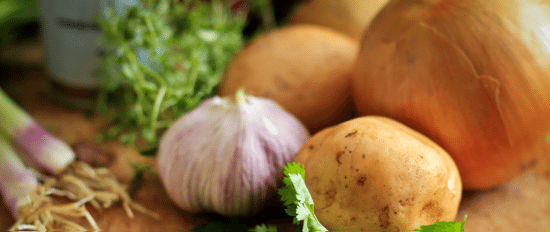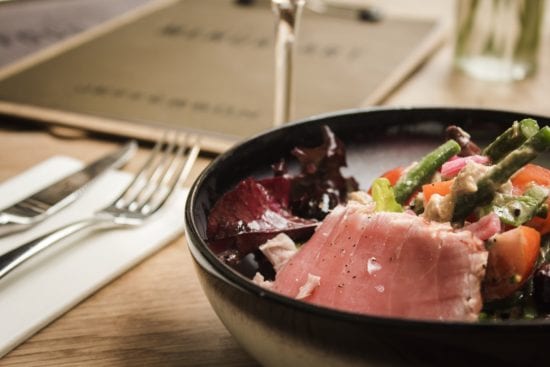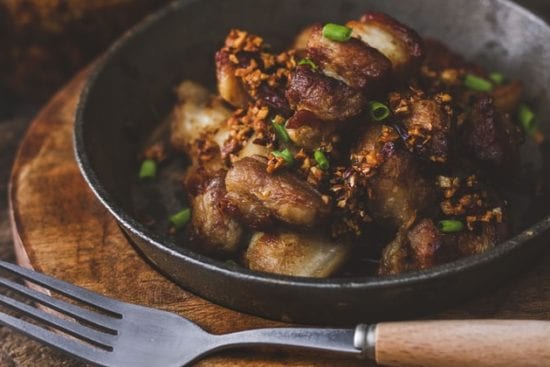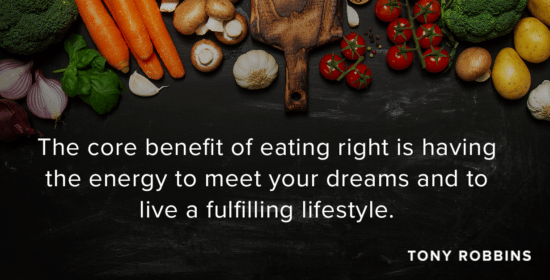The healthy guide to dieting for weight loss
Back to Achieving Lasting Weight Loss
The human body is truly remarkable. Even our smallest cells have a whole living, breathing system inside of them that constantly works to produce energy and carry out the many essential functions required of our bodies. In a very real sense, the human body is complex and strong, capable of achieving so much if we provide it with what it needs to perform well. Still, in another and equally real sense, our bodies are fragile, and they count on us to make a conscious effort to protect them.
It’s easier than you think to hurt the body. When you think of disease, you might think of cells randomly multiplying or conditions passed down through genetics. The reality is, the most widespread source of disease stems from something we should be thinking about every day – our diets. It’s important to always support our bodies and our cells – the workhorses of our anatomy – by eating the right things and avoiding the wrong ones. The proper diet plan addresses avoiding toxins, nourishing the body with fresh, healing foods and facilitating a healthy weight.
Achieving a healthy weight is important not just for physical health, but your mental health as well. It gives you the energy to meet your dreams and live the fulfilling lifestyle you envision. It’s about having a renewed sense of vitality so you can go after your goals. Having the body you deserve isn’t just about having a certain amount of fat, but also consuming the optimal nutrients your body needs so you can experience a holistic improvement in your well-being.
This weight loss guide focuses on helping you select a nutrition plan for weight loss as well as incorporating mindful practices to help you tune in to what your body is telling you.
This weight loss guide doesn’t solely focus on what you should and shouldn’t be eating – it incorporates mindful practices to better help you become tuned in to what your body’s telling you.

First, take some time to breathe
Weight loss and maintaining a healthy lifestyle is not just about subscribing to a healthy diet plan or workout. To begin your health journey, start simply with your breath. After all, one of the core elements of your health is the distribution of oxygen. Oxygen serves critical functions in the body, one of these being involved with the creation of energy (ATP). If we don’t take the time to breathe, then we’re not giving our body one of the most important resources it needs to keep functioning.
Proper oxygen levels also help clear your body of toxins. Around 70% of toxins are removed through the lungs, and healthy breathing is key to feeling rested and relaxed. Taking time out of your day to breathe deeply is incredibly important. It’s recommended that you take 10 “power breaths” at least three times a day.
What’s a power breath? First, you need to separate a single breath into three components: inhaling, holding and exhaling. Three times a day, in sets of ten, follow a ratio of 1:4:2. If you spend five seconds inhaling, for example, then hold your breath for 20 seconds and exhale over a period of 10 seconds. Not only will you feel amazingly relaxed, but you’ll ensure that your body is properly oxygenated throughout the day.
Finding your healthy eating plan for weight loss
Choosing a nutrition plan for weight loss is a personal journey. What works for someone else may not be ideal for you depending on your preferences, body chemistry and lifestyle. Every good healthy diet plan for weight loss includes eating foods packed with fiber and vitamins with minimal sugar and processed ingredients. However, they may differ in which types of food they avoid or when meals and snacks should be eaten. Here are some diet plan options.
Alkaline-based healthy eating plan for weight loss
Your circulatory system helps distribute oxygen throughout your body and protects you from disease. Blood requires a specific and narrow pH balance range that lies between 7.35 and 7.45 to work efficiently. If your blood is outside this pH balance range, then it can’t adequately deliver the oxygen the rest of your body needs to optimally perform. It’s true that the body regulates your pH balance, but it’s also true that you can overtax your body by making its fight against more acidity than it needs to. Where does the majority of this acidity come from? Your food.
A great deal of the food commonly consumed by most people is highly acidic, especially those rich in grain, sugar and processed foods. Too much acidity is associated with inflammation and it can lead to other health problems, such as fatigue and weight gain. You can incorporate the alkaline-based diet plan into your lifestyle by following this rule of thumb: 75% of your diet should be made of alkaline-rich foods and the other 25% of acidic foods.

Low-carb nutrition plan for weight loss

It can be tough to get an accurate picture of how carbs should be incorporated into a healthy diet plan for weight loss. Most of us know by now that loading up our diets with red meat, cheeses and rich sauces is not a healthy path for optimal weight loss, but eating low-carb does not have to mean eating high fat. A smart low-carb healthy eating plan for weight loss involves plenty of vegetables, nuts and seeds and lean protein sources such as wild-caught fish, grass-fed beef (try to limit the red meat, though) and free-range chicken.
When you eat low-carb and adopt a diet plan without grains, you put your body into fat-burning mode. You also cut out unhealthy processed foods and sugar that spike your blood sugar, increase inflammation and lead to weight gain. A grain-free nutrition plan for weight loss – when done correctly – can have a whole host of other benefits along with dropping pounds.
Keto diet plan
One of the biggest buzz words in the diet community these days is keto, which is short for ketogenic. The ketogenic diet plan is very similar to a low-carb nutrition plan for weight loss as it focuses on healthy fats and proteins and limits grains, processed foods and sugar. The goal of the keto diet plan is to put the body into ketosis, or a state where it burns the body’s fat instead of sugar and carbs for energy. Proponents of the keto plan say it gives them more energy, greater mental clarity and has lowered their blood pressure and cholesterol levels, all while helping them lose weight. If you do choose a keto or low-carb diet plan that limits or eliminates some foods, consider adding high-quality supplements into your diet to ensure you are getting all the nutrients your body needs.

Intermittent fasting

Intermittent fasting is more a way of eating than an actual diet plan. It can be used with any of the above healthy eating plans to supercharge weight loss and increase health and vitality. Intermittent fasting is a broad term used to describe various ways of not eating for long periods of time. One of the most popular methods is to eat only within an eight-hour window each day and limit yourself to water for the remaining 16 hours. As with any diet plan, weight loss is one of the main goals of intermittent fasting, but it can also help your cells repair themselves, act as a detox tool and even add years to your life. Fasting can also help you develop mindful eating habits as it helps you tune into your body’s hunger signals.

The power of water & how to snack right
Though it’s not technically a diet plan, drinking enough water and snacking in the right way can assist you with your weight loss goals. You’ve probably heard that you’re supposed to drink a substantial amount of water per day, but how does water play into a healthy eating plan? Water plays an important role in our health as it helps us absorb vital nutrients and eliminates toxins that can cause us harm. The general rule is that you drink at least 8–10 cups of water each day. Apart from keeping you healthy, did you know that drinking more water can help you lose weight? According to a 2015 study, drinking water 30 minutes before a meal is associated with weight loss, which makes a lot of sense when you consider that water helps to fill you up without adding calories.
In fact, many times when we feel hungry, we’re often just thirsty. Our body signals our hypothalamus (a small part of the brain that’s responsible for regulating mood and hormones within the body) when we’re hungry or thirsty, and the hypothalamus can’t distinguish between the two feelings. This is why you feel hungry even if your body is asking you for water.
The next time you’re craving a certain type of food or feel like you need a snack, try reaching for a glass of water first. Sometimes, though, you really are hungry, and a snack can be an important source of fuel and energy to keep you going through the day. You can still maintain a diet plan for weight loss and snack when you need to.
To fight off hunger throughout the day, reach for healthy, nutrient-dense items like carrots and celery with hummus. Avocado is another great food to snack on and you can pair it with toasted seeds or Brazil nuts. What’s great about so many of these foods is that they’re extraordinarily filling and you won’t eat a large portion before you feel satisfied and full. They also fit in a healthy diet plan for weight loss that limits carbs or acid-producing foods.
Get more energy and lose weight by changing what you put into your body
With clarity and focus comes the power to meet your health and fitness goals. Do you want to lose weight? Are you trying to create more energy? Are you tired of feeling sick? If you know what you want and why you want it, a healthy diet plan will enable you to achieve more in all areas of your life. It can feel challenging to change how you eat, but when you’re truly focused on what you want, you’ll do whatever it takes to create The Body You Deserve.